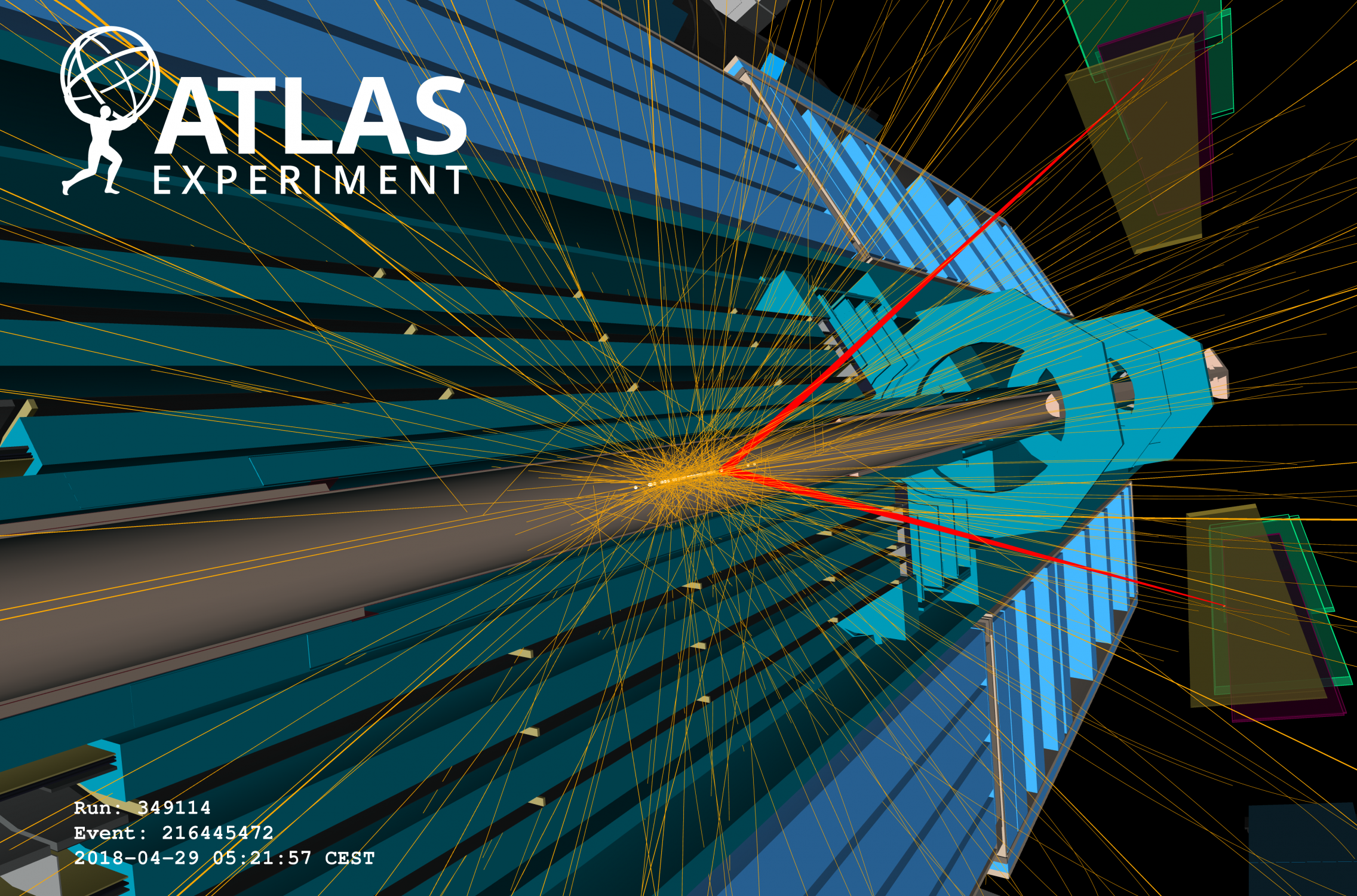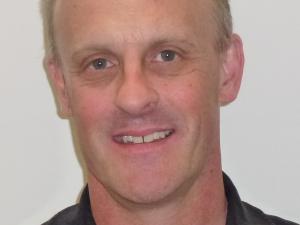Experimental High-Energy Physics
ATLAS experiment at the CERN Large Hadron Collider in Geneva, Switzerland

A representation of a high momentum mono-jet event as recorded by the ATLAS detector at CERN.
We make precision measurements of the top quark and Higgs Boson and perform some of the most sensitive searches to physics beyond the Standard Model.
You will get involved with the Adelaide team using the LHC data to constrain Beyond Standard Model theories (Supersymmetry, Dark Matter and beyond). You will probe the fundamental aspects of nature at the highest energies man has ever created.
With the ATLAS experiment barely having collected 1% of the anticipated final dataset there is a huge scope of excitement - and discovery!
Belle II experiment at the KEKB Collider in Tsukuba, Japan
This year Belle II will commence preparation for first data where electron-positron collisions will produce pairs of B mesons. We use techniques to fully reconstruct B meson decays and then make measurements of rare decays.
In earlier datasets three experiments have seen large disagreements with the Standard Model expectations and these measurements from Belle II will be the definitive statement on whether these studies point to cracks in the Standard Model.
ATLAS experiment Phase II Upgrade
From the 2020’s and onwards the ATLAS experiment will be revolutionised to upgrade its capabilities.
You will work with the Adelaide team to improve the readout technology of the all new charged particle silicon tracking chambers required to reconstruct particles passing through the inner detector from the high energy proton-proton collisions.
There is also the possibility to work on new trigger software to allow the next generation of algorithms to function at a higher rate – and extract more physics!
SABRE dark matter experiment at the Stawell Underground Physics Laboratory
- Supervisors: Gary Hill and Anthony Williams
Understanding the nature of the dark matter in the Universe in one the great challenges in physics. The DAMA-LIBRA experiment in the northern hemisphere claims to see a signal from the Earth moving around the sun in and out of the galactic halo dark matter “wind.” This is a controversial result; in contradiction to other measurements. This annual modulating signal may possibly be a systematic seasonal effect that mimics the expected signal.
Such an effect would be reversed in the southern hemisphere: it is thus crucial to operate a dark matter detector in the south – the SABRE (Sodium-iodide with Active Background REjection) detector, under construction for deployment in the Stawell gold mine in Victoria.
We work on several aspects of the detector construction and preparation for physics analysis. Possible honours projects include characterisation of a neutron monitoring system to be eventually installed in the mine to measure this critical background, studies of detector performance, particularly how we would decouple systematic and real signal effects; and development of calibration systems to characterise the performance of the liquid scintillator active veto system surrounding the Sodium Iodide detector crystals.
Simulation of Physics at the Circular Electron Positron Collider (CEPC)
One of the most exciting projects in the future of particle physics is that of a large scale 50-100km circular e+e- collider.
Two proposals exist and we propose working on dedicated simulations for the proposed “Higgs Factory” in China a facility that will change the landscape of our understanding of Electroweak symmetry breaking on the Higgs Mechanism itself.
Study high energy physics
The research activities of the High Energy Physics (HEP) group in the Department of Physics are largely carried out under the umbrella of the ARC Centre of Excellence for Particle Physics at the Terascale (CoEPP) of which Adelaide is one of four nodes (University of Adelaide, University of Melbourne, Monash University and the University of Sydney).
- Associate Professor Paul Jackson | Associate Professor Martin White | Associate Professor Gary Hill | Professor Anthony Williams
- Research area: High-energy physics
- Recommended honours enrolment: Honours in Physics




